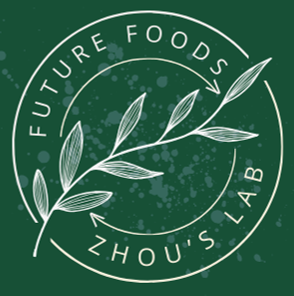Plant-based meat, egg, and fat (2020-2023)
Introduction
The creation of plant-based food alternatives has gained significant attention due to the growing need for sustainable and health-conscious dietary options. Traditional animal-based food production is a major contributor to environmental challenges, including greenhouse gas emissions, deforestation, and water scarcity. At the same time, increasing awareness of the health risks associated with high consumption of animal products, such as cardiovascular diseases and obesity, has driven consumers toward plant-based diets. Plant-based food alternatives offer a more sustainable solution in this context.
- Meat alternative via a coacervation-shearing-gelling method
High-energy processing equipment, such as extruders or shear cells, is typically required to produce fibrous plant-based meat analogs with textures and mouthfeels that mimic real meat. I proposed a low-energy alternative using a soft matter physics approach that combines complex coacervation, shearing, and gelation of protein/polysaccharide mixtures (Figure 1). Specifically, a mixture of potato protein and polysaccharide (e.g., gellan gum) was used to create chicken analogs. Microstructural and visual analyses revealed aligned fibrous structures resembling those found in real chicken. These findings demonstrate the potential of soft matter physics approaches to create fibrous structures and advance the development of plant-based meat analogs.
Figure 1. Sustainable low-energy coacervation-shearing-gelling method for the creation of fibrous chicken analogs.
Reference
Zhou, H.‡; Hu, X.‡; Xiang, X.; McClements, D. J. Modification of textural attributes of potato protein gels using salts, polysaccharides, and transglutaminase: Development of plant-based foods. Food Hydrocolloids 2023, 144, 108909. DOI: https://doi.org/10.1016/j.foodhyd.2023.108909.
Ryu, J.; Xiang, X.; Hu, X.; Rosenfeld, S. E.; Qin, D.; Zhou, H.*; McClements, D. J. Assembly of plant-based meat analogs using soft matter physics: A coacervation-shearing-gelation approach. Food Hydrocolloids 2023, 142, 108817. DOI: https://doi.org/10.1016/j.foodhyd.2023.108817.
Ryu, J.; Zhou, H.*; McClements, D. J. In vitro digestibility and gastrointestinal fate of plant-based chicken analogs prepared using a soft matter physics approach. Food Biophysics 2024, 19 (1), 109-119. DOI: https://doi.org/10.1007/s11483-023-09808-4.
- Egg alternative via emulsion technology
I developed a plant-based egg analog using emulsion technology, focusing on RuBisCO proteins extracted from plants (Figure 2). RuBisCO, a functional plant-based protein, was used to mimic the structural and functional properties of egg proteins, offering a sustainable and allergen-friendly alternative. Emulsion technology was employed to achieve the desired texture, structure, and mouthfeel characteristic of whole eggs. Additionally, the appearance and functionality of the egg analog were further enhanced through pH-driven technology, which incorporated the curcumin to achieve an improved color and consistency. Besides, we also incorporated the lutein into the emulsions to mimic the appearance of real egg. These advancements enable the creation of plant-based eggs with high consumer acceptability and nutritional benefits, contributing to the development of sustainable and functional food systems.
Figure 2. Utilization of emulsion technology for the creation of plant-based egg analog.
Reference
Zhou, H.*; Vu, G.; Ju, Q.; Julian McClements, D. Development of plant-based whole egg analogs using emulsion technology. Food Research International 2024, 187, 114406. DOI: https://doi.org/10.1016/j.foodres.2024.114406.
Zhou, H.; Vu, G.; McClements, D. J. Formulation and characterization of plant-based egg white analogs using RuBisCO protein. Food Chemistry 2022, 397, 133808. DOI: https://doi.org/10.1016/j.foodchem.2022.133808.
Vu, G.; Xiang, X.; Zhou, H.*; McClements, D. J. Lutein-fortified plant-based egg analogs designed to improve eye health: Formation, characterization, in vitro digestion, and bioaccessibility. Foods 2023, 12 (1), 2. DOI: https://doi.org/10.3390/foods12010002.
- Adipose tissue alternative via emulsion technology
I collaborated on a study to develop plant-based adipose tissue analogs using emulsion technology. This work focused on formulating high internal phase emulsions (HIPEs) based on soy proteins to mimic the texture, structure, and functionality of animal adipose tissue. The study demonstrated the potential of HIPEs to serve as sustainable and health-conscious alternatives to animal-derived adipose tissue in plant-based meat products.
Reference
Hu, X.; Zhou, H.; McClements, D. J. Utilization of emulsion technology to create plant-based adipose tissue analogs: Soy-based high internal phase emulsions. Food Structure 2022, 33, 100290. DOI: https://doi.org/10.1016/j.foostr.2022.100290.


